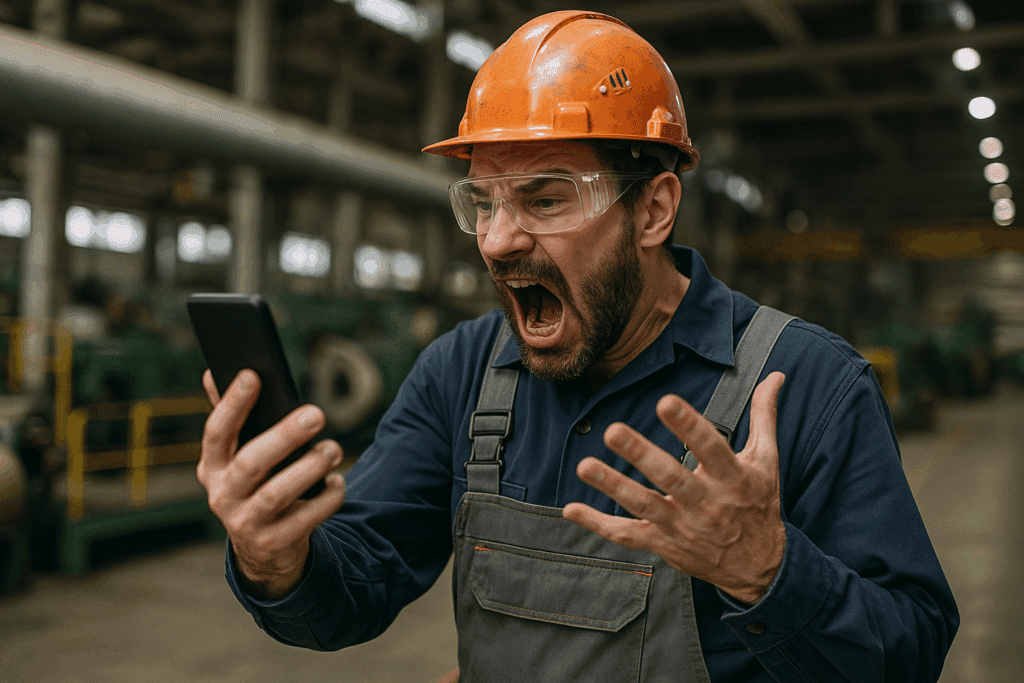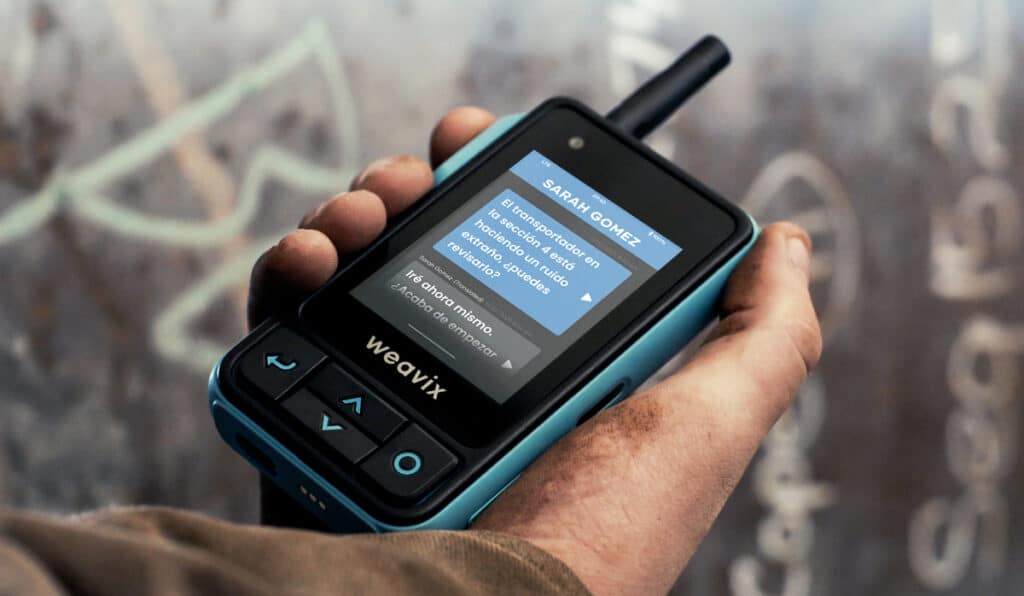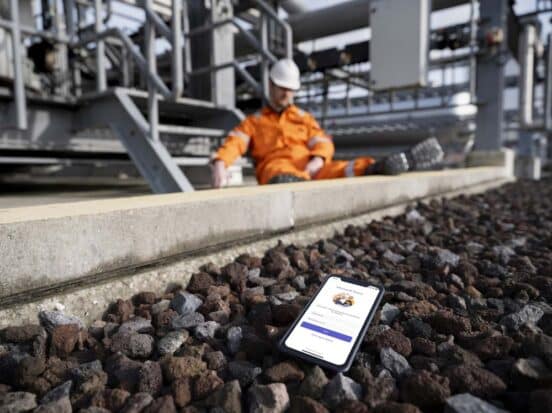Key Takeaways
- Microsoft Teams faces challenges in industrial environments due to delays and distractions, risking safety and efficiency.
- Smart radios provide instant push-to-talk communication with sub-1 second response times, eliminating smartphone-related hazards.
- Industrial settings report higher failure rates and productivity losses with smartphones, making smart radios more reliable.
- Companies adopting smart radio systems experience faster response times and reduced safety incidents compared to Teams.
- Smart radios are purpose-built for harsh conditions, offering features that Microsoft Teams lacks, making them the preferred choice for industrial communication.
Microsoft Teams seems like the obvious choice for industrial communication. Your office workers already use it, it’s included in your Microsoft 365 subscription, and deploying it to smartphones appears cost-effective. The promise of unified communication across your entire organization, from boardroom to factory floor, is compelling.
However, what works perfectly for desk-based collaboration becomes problematic when applied to industrial environments with safety-critical operations, harsh conditions, and hands-on workers who need instant, reliable communication.
>>See how the Walt smart radio system works.
Key Industrial Communication Statistics:
26% – Workplace accidents caused by smartphone distractions in industrial settings vs 14% in office environments
2-8 seconds – Communication delay with Teams on smartphones vs <1 second with smart radios
75% – Digital distractions in industrial settings that lead to property damage

What Are the Biggest Problems When Frontline Workers Try to Use Microsoft Teams?
Teams creates multiple failure points in industrial environments. Workers must unlock their device, navigate through notifications, find the right chat or call function, and hope for stable connectivity. This process takes 2-8 seconds in ideal conditions. In emergency situations where equipment failure cascades within minutes, these delays become dangerous.
The smartphone interface designed for office workers becomes a liability with industrial gloves, in noisy environments, or when workers need hands-free operation. Survey data shows employees spend 2.5 hours daily on non-work digital content, creating constant distraction in environments where focus is literally a matter of life and death.
Teams Smartphone Challenges:
47% – Device failure rate within 6 months in industrial environments
8-12 hours – Battery life under industrial workload vs 16+ hours for smart radios
Complex – Authentication steps and navigation vs simple push-to-talk operation
How Do Safety Risks Compare Between Teams and Smart Radios in Industrial Settings?
Industrial settings see 26% of workers experiencing workplace accidents caused by smartphone distractions, nearly double the 14% rate in office environments. Even more alarming, 75% of distractions in industrial settings lead to property damage, while over half (58%) result in injury or death.
Smart radios eliminate the distraction factors that make smartphones dangerous. They’re designed for hands-free operation, don’t have social media notifications or personal apps, and use simple push-to-talk interfaces that work with heavy gloves. When 80-90% of incidents are derived from human factors, removing smartphone distractions becomes critical for safety.
Industrial Safety Impact:
58% – Digital distractions in industrial settings that result in injury or death
80-90% – Workplace incidents caused by human factors including communication delays
2.78 million – Annual workplace fatalities globally according to International Labor Organization
Which Communication System Responds Faster in Emergencies: Teams or Smart Radios?
The response time difference is dramatic and measurable. Teams on smartphones requires 2-8 seconds for communication setup, while smart radios deliver messages in under 1 second. In emergency scenarios where every second counts, this difference can mean the difference between preventing an incident and dealing with catastrophic failure.
Picture this scenario: A hydraulic leak threatens electrical equipment in your facility. Your maintenance supervisor needs to alert the entire team immediately. With Teams, they must unlock the device, navigate through notifications, find the right chat group, and hope everyone sees the message. With smart radios, they press one button and instantly communicate with their entire team.
| Method | Lag Time | Safety Risk | Ruggedness | Battery Life | Hands Free | Ease of Use |
|---|---|---|---|---|---|---|
| Teams Smartphone | 2-8 sec | High | Consumer | 8-12 hrs | No | Complex* |
| Smart Radio | <1 sec | Low | Industrial | 12-16 hrs | Yes | Simple |
| Traditional PTT | <0.3 sec | Low | Industrial | 16+ hrs | Yes | Very simple |
Sources: Industry research, safety studies, manufacturer specifications
Emergency Response Comparison:
<1 second – Smart radio push-to-talk response time vs 2-8 seconds for Teams
Instant – Group broadcast capability with smart radios vs individual messaging delays
Zero – Navigation steps required for emergency communication with smart radios
What’s the Real Cost Difference Between Teams Smartphones and Smart Radio Systems?
While Teams appears cheaper upfront through existing Microsoft 365 licensing, the total cost of ownership tells a different story. Consumer smartphones show 22-27% failure rates under normal use. In industrial environments with dust, moisture, chemicals, and physical shocks, replacement cycles accelerate dramatically.
Hidden costs include ruggedized cases ($50-150 per device), frequent replacements due to damage, productivity loss during device failures, IT management overhead for lost/stolen devices, and increased workers’ compensation claims from smartphone-related accidents. OSHA regulations already forbid cell phone use in construction regulations pertaining to cranes and derricks, with enforcement expanding.
Total Ownership Cost Factors:
$300-500 – Replacement cost per device including protection and cases
40-60% – Higher total ownership costs for smartphone systems vs purpose-built solutions
18% – Productivity loss during device downtime and replacement cycles

How Do Smart Radios Solve the Problems That Teams Creates for Industrial Workers?
Smart radios are purpose-built for industrial communication challenges. They combine instant push-to-talk functionality with industrial-grade durability, hands-free operation, and safety features specifically designed for harsh environments. Unlike consumer smartphones running Teams, these devices offer sub-1-second response times, IP67/68 water and dust resistance, and glove-friendly controls.
Most importantly, smart radio systems include features that Teams wasn’t designed to provide: man-down detection, emergency broadcasts, real-time location tracking, automatic incident documentation, and seamless multilingual support with real-time translation for diverse workforces.
Smart Radio Advantages:
IP67/68 – Water and dust resistance rating vs consumer smartphone protection
Class 1 Div 2 – Safety certification for hazardous industrial environments
16+ hours – Battery life under continuous industrial use
Why Are Smart Radios Easier for Frontline Workers to Use Than Teams?
Industrial workers often prefer simple, tactile tools over complex smartphone interfaces. Smart radios use familiar push-to-talk operation that requires minimal training, works with heavy gloves, and doesn’t require navigating through multiple apps or dealing with authentication delays.
While 66% of employees admit to using cellphones at work multiple times daily, industrial workers need communication tools designed for their environment, not repurposed office applications. Smart radios eliminate the learning curve and adoption resistance that comes with forcing office-centric tools onto frontline workers.
User Experience Comparison:
1 button – Smart radio operation for instant communication vs multiple steps for Teams
Zero – Training time required for familiar push-to-talk interface
Simple – Glove-friendly physical controls vs touchscreen complexity
Which System Is Better for Harsh Industrial Environments: Teams or Smart Radios?
Industrial facilities create perfect storms for smartphone failure: concrete walls and metal structures cause Wi-Fi dead zones, electromagnetic interference from heavy machinery disrupts signals, and physical conditions destroy consumer-grade devices. Teams requires constant connectivity for real-time messaging and calls. When connectivity drops, messages queue but don’t deliver, video calls freeze, and critical updates are delayed or lost.
Smart radio systems use mesh networking, work on multiple network types (Wi-Fi, LTE, private networks), and maintain offline capabilities to ensure communication when infrastructure fails. They’re specifically engineered for industrial punishment that would destroy consumer smartphones within months.
Environmental Durability:
Consumer grade – Smartphone protection vs industrial-rated smart radio construction
Multiple networks – Smart radio connectivity options vs Teams’ Wi-Fi/cellular dependency
Mesh networking – Offline communication capability vs Teams’ connectivity requirements
What Do Industrial Companies Actually Choose: Teams or Smart Radios?
Leading manufacturers are moving toward purpose-built communication platforms designed for industrial reality. Companies implementing smart radio systems report 68% faster response times, significant reductions in safety incidents, and improved operational efficiency. Organizations like major automotive manufacturers and food processing facilities have replaced traditional communication methods with smart radio platforms.
The trend is clear: while Teams remains excellent for office collaboration, industrial operations require communication tools built for their unique challenges. Smart radios represent the evolution of industrial communication, combining the reliability of traditional radios with modern features like multimedia messaging, AI translation, and data analytics.
Industry Adoption Results:
68% – Faster response times reported by companies implementing smart radio systems
Significant – Reduction in safety incidents after switching from smartphone-based communication
Growing – Trend toward purpose-built industrial communication platforms
The Verdict: Smart Radios Win for Industrial Communication
The head-to-head comparison reveals a clear winner for industrial environments. While Microsoft Teams excels in office settings, smart radios are purpose-built for the unique demands of industrial operations. The combination of instant response times, industrial durability, safety-first design, and hands-free operation makes smart radios the clear choice for manufacturing, construction, and other industrial applications.
Your frontline workers deserve communication tools built for their world, not adapted from office environments. The productivity gains, safety improvements, and operational efficiency of purpose-built smart radio systems aren’t just measurable – they’re essential for modern industrial competitiveness.
When to Choose Each:
Choose Teams if: Office environment, desk workers, reliable Wi-Fi, no safety-critical operations
Choose Smart Radios if: Industrial setting, mobile workforce, harsh conditions, safety-critical communication
Bottom Line: Smart radios win the industrial communication head-to-head by being purpose-built for the challenges Teams wasn’t designed to handle.
>>>> Learn how the Walt Smart Radio System sets the standard for modern industrial communication.
>>>>See our full comparison guide to learn why smart radio beats two-way radios, Microsoft Teams, smart phones, flip phones and others claiming to be smart radios for critical use cases in manufacturing.


